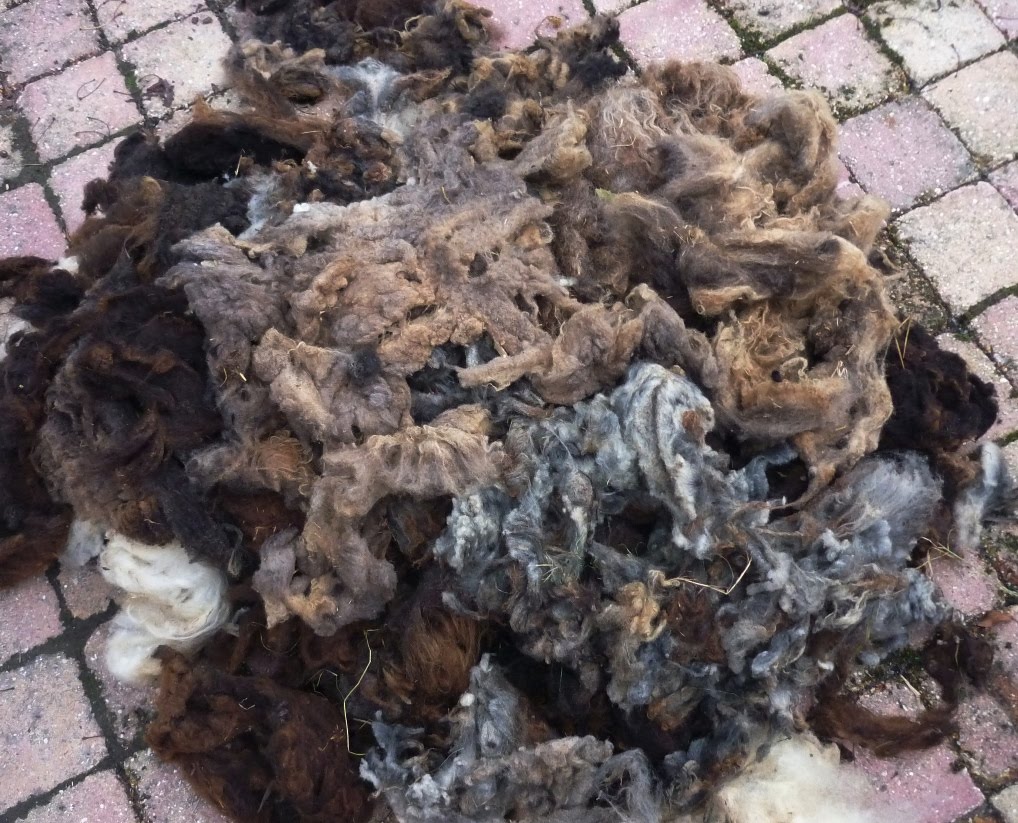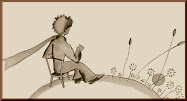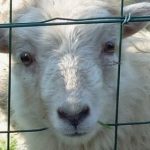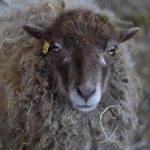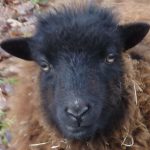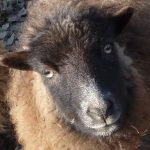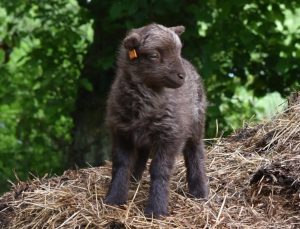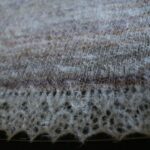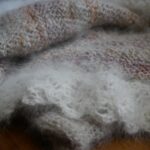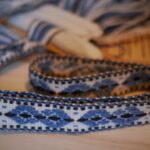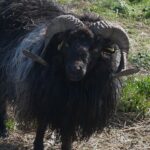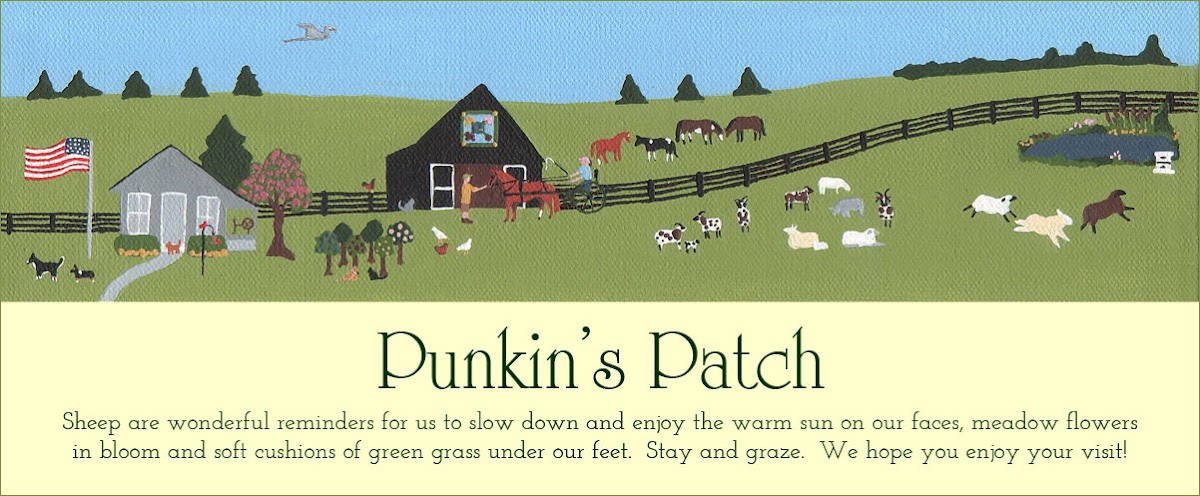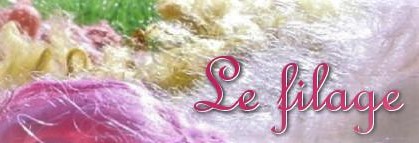De la Toison au Tricot n° 46 : Trier une Toison
A number of readers have asked me to explain how I skirt (or sort) a fleece. First, before getting down to the nitty gritty of the subject at hand, perhaps I should say a little bit about the goal — or rather the goals — of skirting a fleece. As a spinner, I think that we can talk about two different types of skirting (or sorting) each with different objectives.
To begin with, generally when we talk about skirting a fleece, the main goal is to get rid of any parts of the fleece that are seen to be undesirable and unsuitable for spinning. This type of skirting is the first step when preparing a fleece for spinning. And it is mainly this type of skirting that we are interested in here.
That being said, after skirting a fleece to remove unwanted wool, we can then go on to sort the wool into various categories of wool : for example according to the finesses of the wool, the staple length, or the color of the wool. This type of sorting is particularly useful when dealing with a large fleece that weighs 5 or 6 pounds (or more). But when dealing with an Ouessant fleece that rarely weighs more than 2 pounds, this this type of sorting would be somewhat excessive due to the small size of the fleece.
So then, let’s get to work & start skirting a raw Ouessant fleece.
In order to show you how I skirt a fleece, I’ve randomly chosen two fleeces that will serve as examples.
We will start with the white Ouessant fleece of Désirée.
Plusieurs lecteurs et lectrices m’ont demandé d’expliquer le tri d’une toison brute. D’abord, avant de se lancer dans le vif du sujet, peut-être il faut parler un peu de l’objectif – ou plutôt des objectifs – du tri. En tant que fileuse, je pense que nous pouvons parler en gros de deux genres de tris avec deux objectifs différents.
D’abord, nous pouvons parler du tri d’une toison brute qui a pour objectif de la débarrasser des parties de la toison jugées indésirable et impropres à être travaillées. Ce tri de nettoyage est la première chose à faire quand nous commençons à travailler une toison. Et c’est surtout ce genre de tri qui nous concerne.
Ceci dit, après avoir effectué un tri de nettoyage nous pouvons ensuite faire un tri de sélection qui a pour objectif de trier ou de classer la laine selon les critères établis par la fileuse : par exemple en considérant la finesse de la laine ou la longueur de la mèche ou encore sa couleur. Ce dernier tri de sélection concerne surtout une grande toison qui pèse au moins plusieurs kilos. En ce qui concerne une toison Ouessant brute qui ne pèse que très rarement plus d’un kilo, un tri de sélection me semble inutile faute d’une quantité de laine suffisante.
Alors, passons au tri de nettoyage d’une toison brute.
Pour vous montrer comment je fais, j’ai choisi, plus ou moins au hasard, deux toisons qui vont nous servir comme cas d’étude.
Commençons par la toison blanche de Désirée.
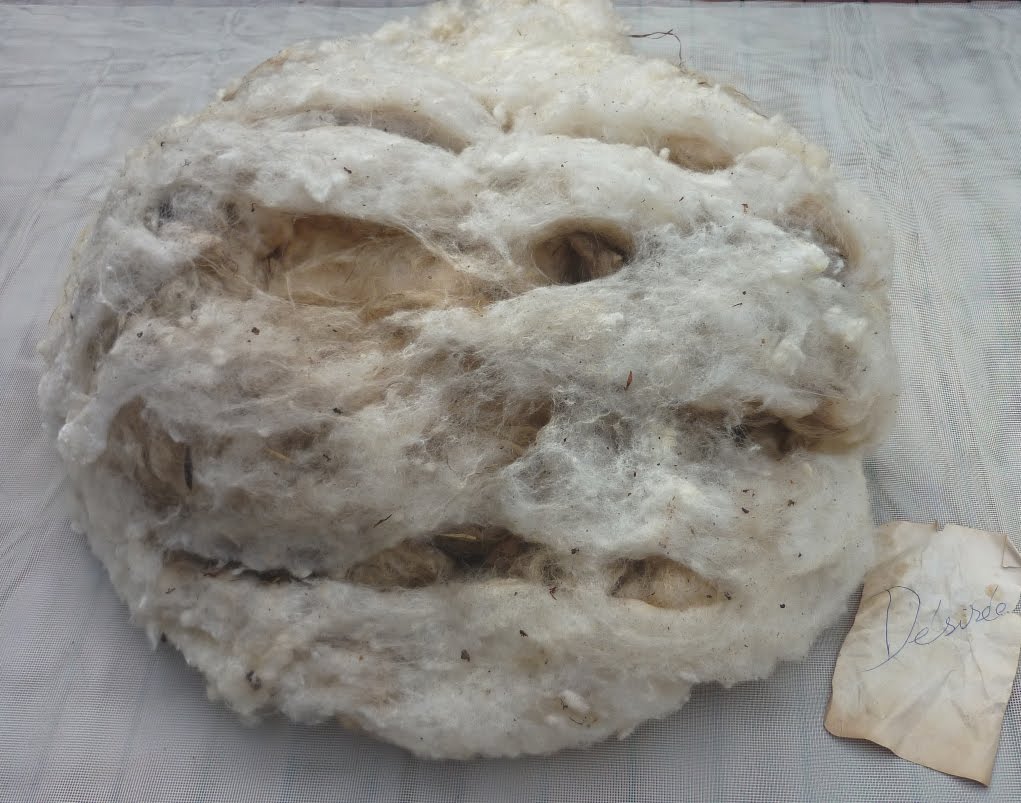
Désirée’s raw fleece comes to us in the form of a small ball of wool that has been carefully rolled up. This is exactly how a fleece should look.
Normally, when the shearer finishes his work, he will fold and roll up the fleece so that the tips of the fleece are in the inside of the ball of wool and the cut side of the fleece is on the outside of the ball of wool.
On a large, flat surface, we are going to unroll this little ball of wool. It’s really important to work slowly. But with a bit of patience, we end up by finding the shape of the sheep!
La toison brute de Désirée se présente comme un petit ballot de laine, bien enroulé. C’est exactement sous cette forme qu’une toison brute doit se présenter.
Normalement, quand le tondeur termine son travail, il plie et enroule la toison pour faire en sorte que les points de la toison sont à l’intérieure du ballot et que le bout coupé est à l’extérieur.
Sur une grande surface, nous allons dérouler ce petit ballot de laine. Il faut travailler assez lentement. Mais avec un peu de patience, on finit par retrouver la forme du mouton!
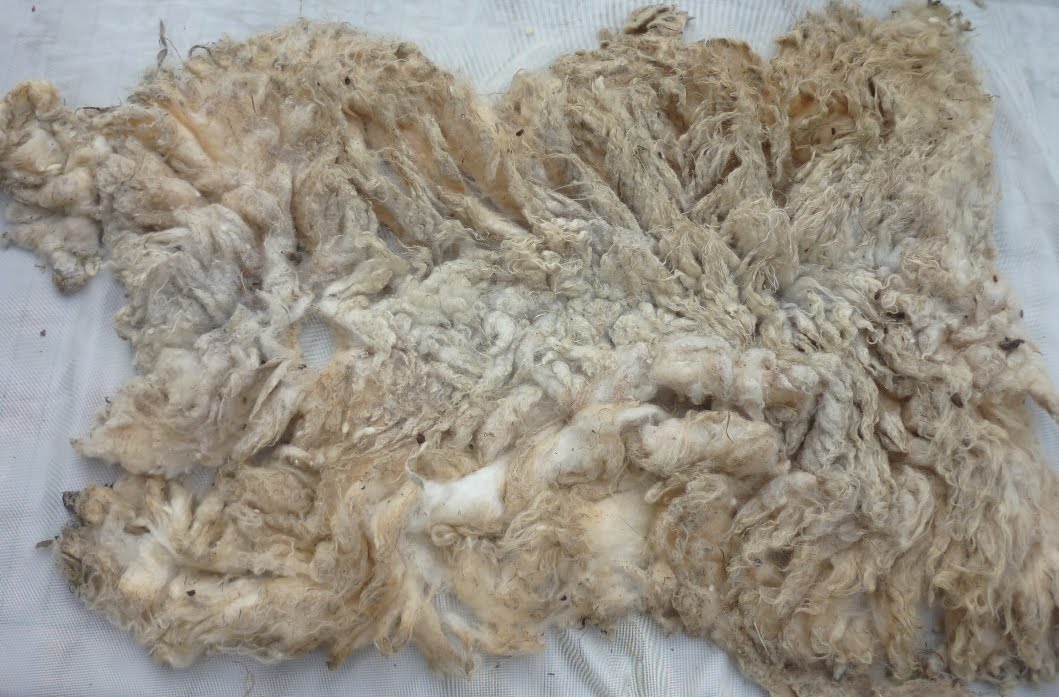
First we notice that this is a pretty fleece with very little vegetable matter. Additionally, we have a say that the shearer did his job well : before folding and rolling up the fleece, he took the time to remove any manure tags and other barnyard accouterments that one too often finds in a fleece. This small geste only takes a little time but it does make the spinner’s work easier.
Before skirting the fleece, I recommend that you take a little time to see if you can’t find which end of the fleece is “the head” and which end is “the tail”.
There are two clues that indicate which end is “the head” : first, the wool around the neck area is often noticeably finer than the wool on the rest of the body ; then, quite often there is a small “bird’s nest” of straw and hay at the base of the neck.
D’abord on constate que c’est une très jolie toison avec très peu de matières végétales. D’autre part il faut dire que le tondeur a très bien fait son travail : avant d’avoir plié et enroulé la toison, il a pris le temps d’enlever le plus gros des “saletés” qu’on trouve trop souvent dans une toison (par exemple excréments, etc). Ce petit geste, prend peu de temps et facilite le travail de la fileuse.
Avant de commencer le tri proprement dit, je vous conseille de prendre un peu de temps pour reconnaître où se situe “la tête” et où se situe “la queue” .
Il y a deux petites signes qui indiquent qu’il s’agit du devant : d’abord, souvent la laine autour du cou est nettement plus fine que celle retrouvée ailleurs. Ensuite, très souvent nous allons retrouver un petit “nid d’oiseau” de paille et de foin derrière le cou.
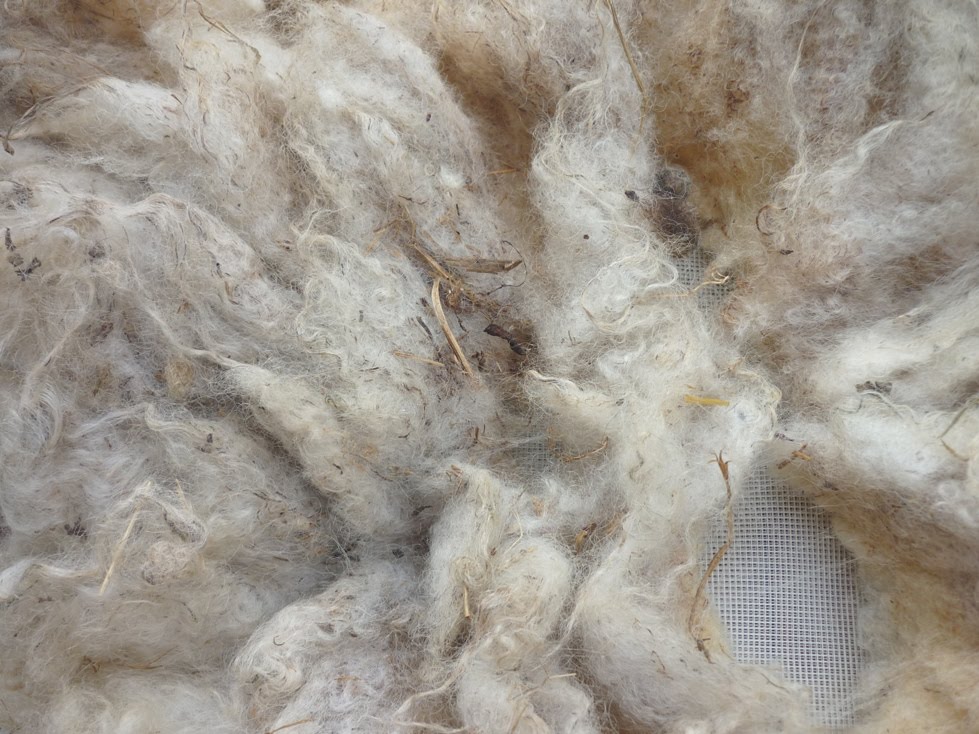
At the same time, there are two clues that indicate where “the tail” is located : the wool around the tail and the back legs (britch) can be quite hairy and coarse.
En même temps il y a deux signes qui indiquent qu’il s’agit du derrière : la laine autour de la queue est souvent assez rêche et poilue ;
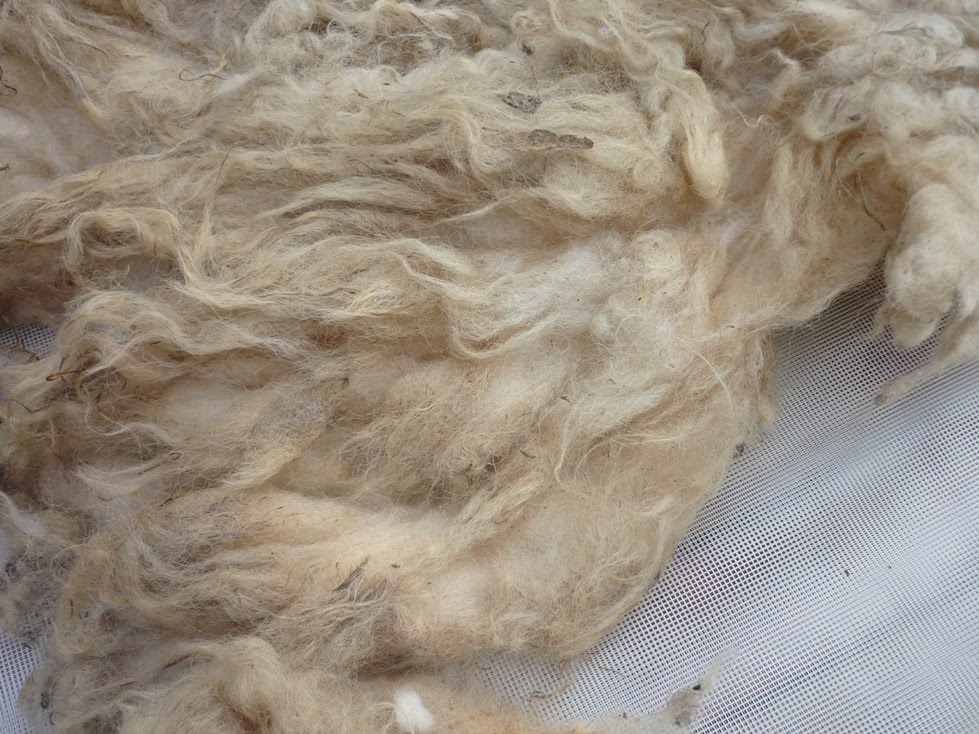
Additionally, there is often dirty wool with manure tags.
… d’autre part, souvent il y a des saletés.
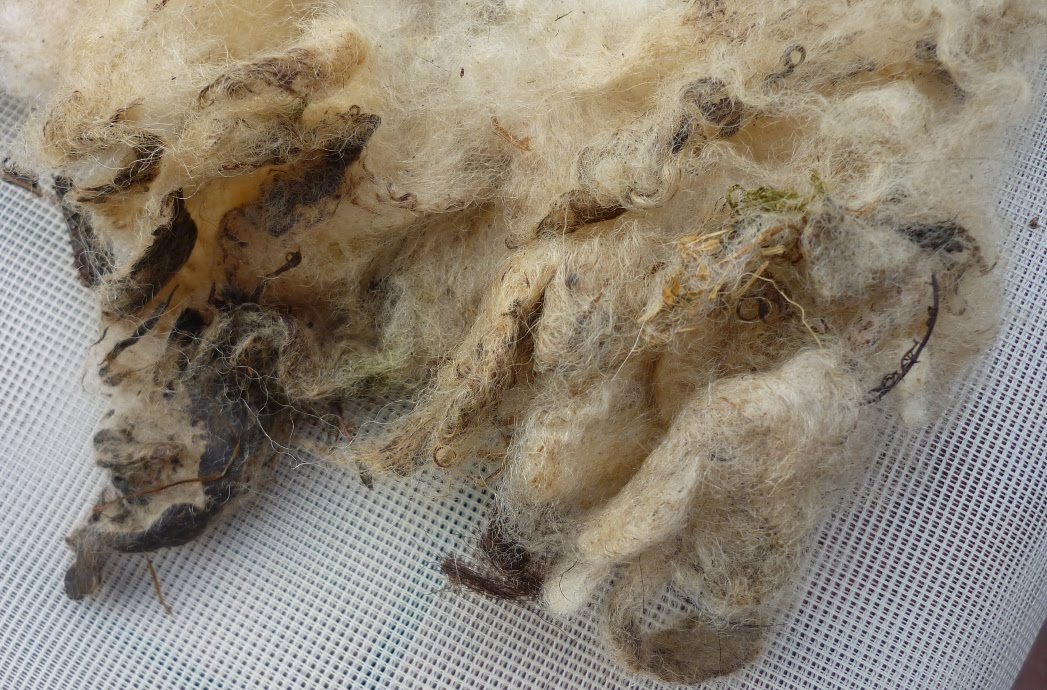
The objective of skirting is to remove any parts of the fleece that are seen to be undesirable and unsuitable for spinning. That being said, what you decide to keep and what you decide to discard is a personal choice (some of us are pickier than others!). Also, keep in mind that an experienced spinner can quickly skirt a fleece : after years of experience, you can quickly see what you want to keep or discard. For a novice spinner, skirting can seem more complicated. My advise : if you’re a new spinner it’s better to keep a bit more of the wool than not enough. After all, you can always throw away any wool that you don’t use later.
As for Désirée’s fleece, I only removed a little bit of wool : a bit from the bird’s nest, some from the britch, and a few handfuls of tag wool. Here it is after skirting :
L’objectif du tri est de se débarrasser des parties de la toison jugées indésirables et impropres à être travaillées. Ceci dit, ce jugement est assez subjectif. D’autre part, une fileuse expérimentée va très vite reconnaître ce qu’elle juge désirable à garder pour le filage. Pour une fileuse débutante le choix est beaucoup plus délicat. A mon avis, dans ce dernier cas, il vaudrait mieux garder un peu trop que pas assez : de toute façon on peut toujours jeter la laine pas utilisée après.
Quant à la toison de Désirée, je n’ai enlevé que très peu de laine : un peu du nid d’oiseau, un peu de laine poilue, et quelques poignées de laine sale. La voilà, après avoir été triée :
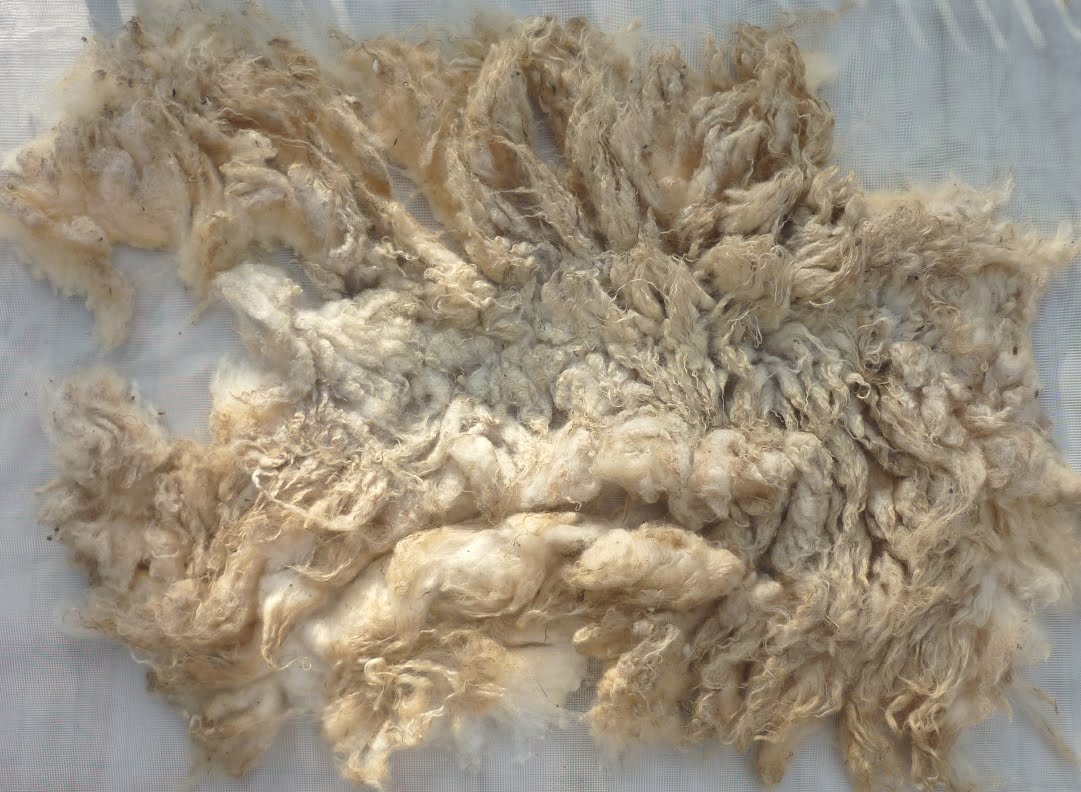
What a beautiful white fleece! Now all I have to do is prepare the fiber and spin !
But perhaps we should take a peek at another example! Here’s Pangée’s fleece, correctly rolled into a nice ball of wool.
Quelle belle toison blanche ! Il ne faut plus que la travailler !
Mais peut-être un autre exemple s’impose. Voilà la toison de Pangée, bien enroulée, comme il faut :
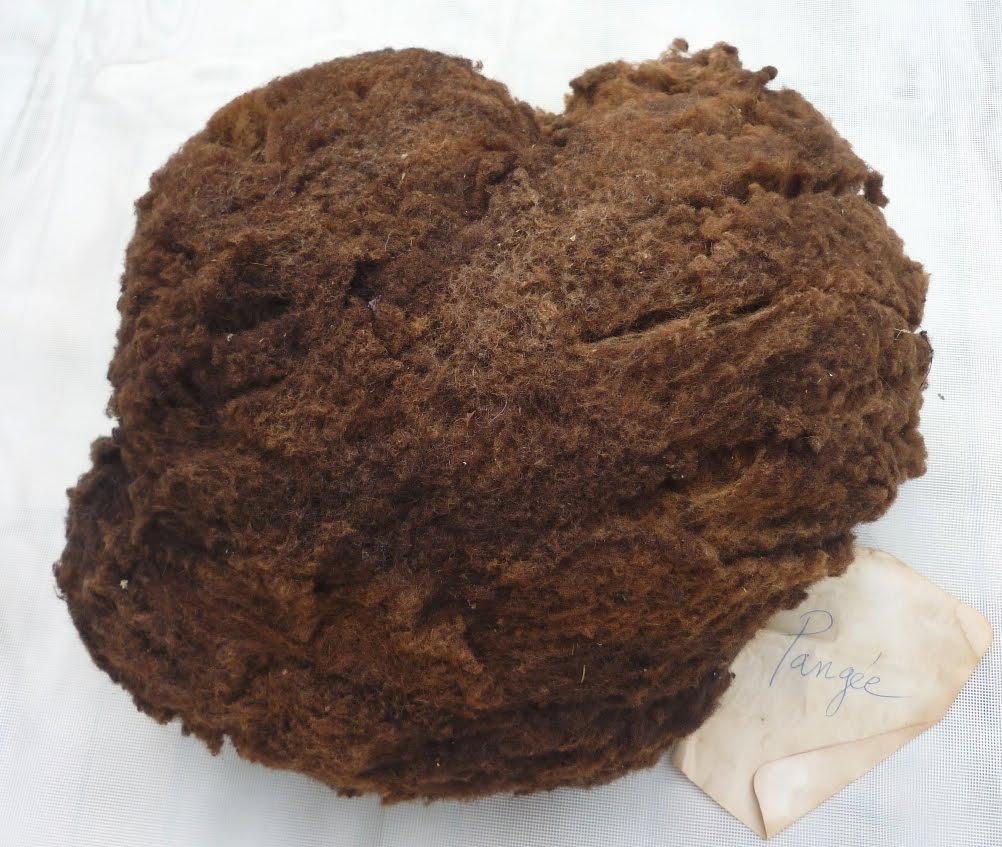
Next, I unroll the fleece so that I find the shape of the sheep :
Ensuite, je la déroule pour faire en sorte que je retrouve la forme originale de la brebis :
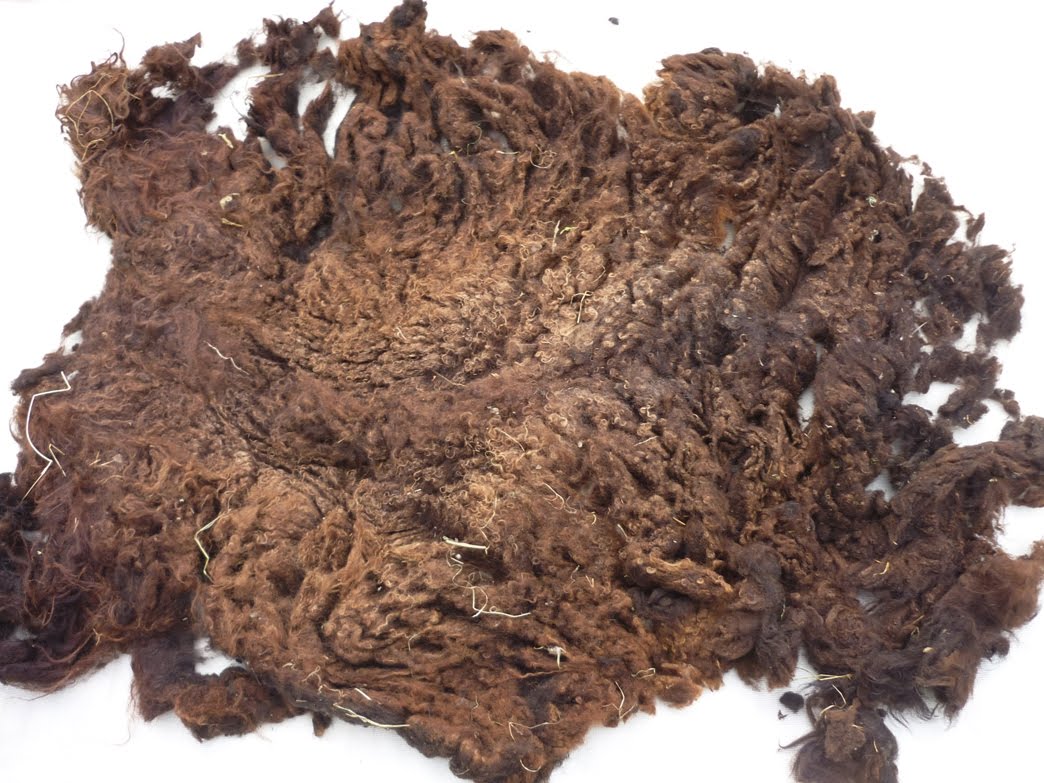
I locate the fine wool around the neck and the bird’s nest …
Je retrouve la laine fine autour du cou et son nid d’oiseau …
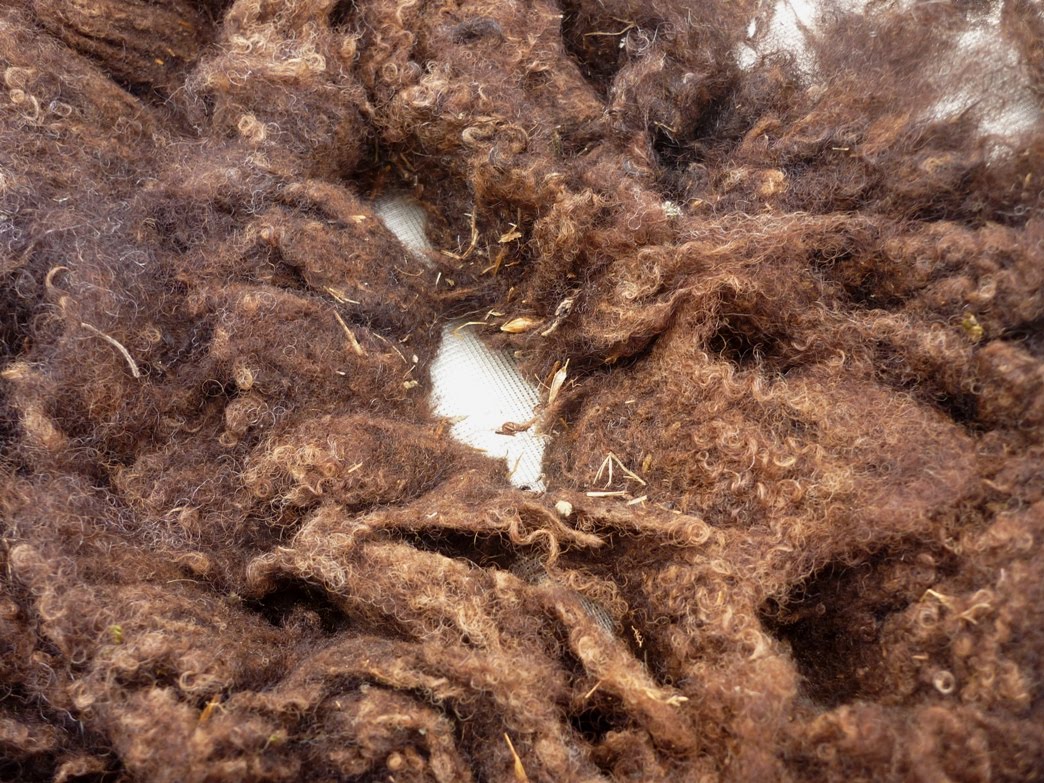
…then I find the coarser hairy wool of the britch.
…puis je retrouve la laine rêche et poilue du derrière.
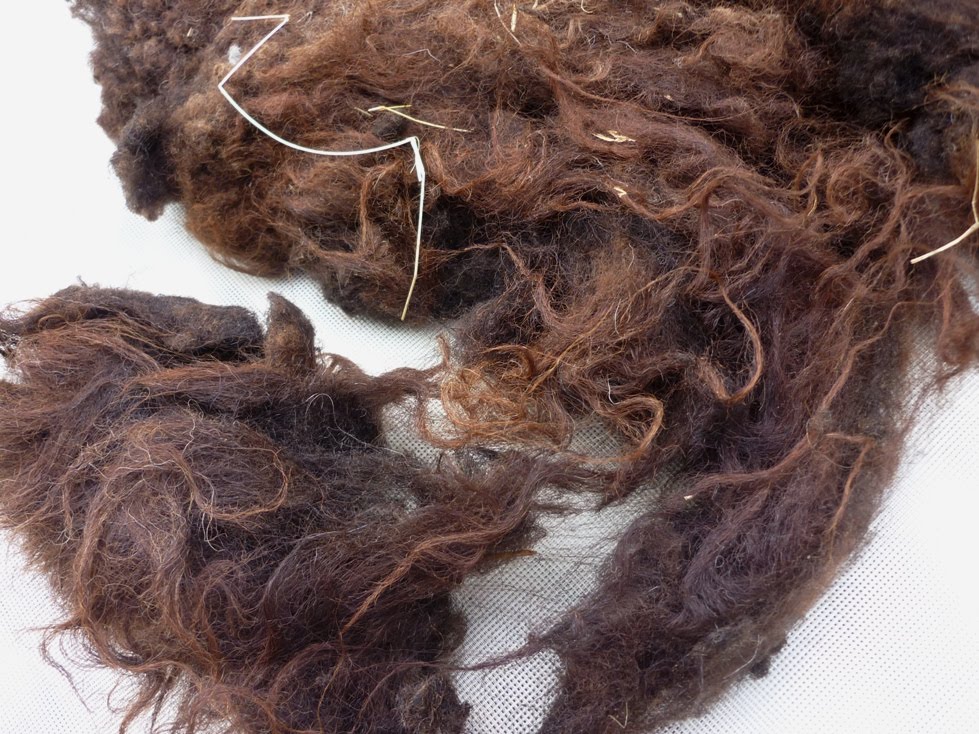
After removing the wool that I don’t want to spin, I have a beautiful black Ouessant fleece just waiting to be prepared for spinning.
Après avoir enlevé la laine que je ne veux pas filer, j’ai une belle toison Ouessant noire prête à être travaillée.
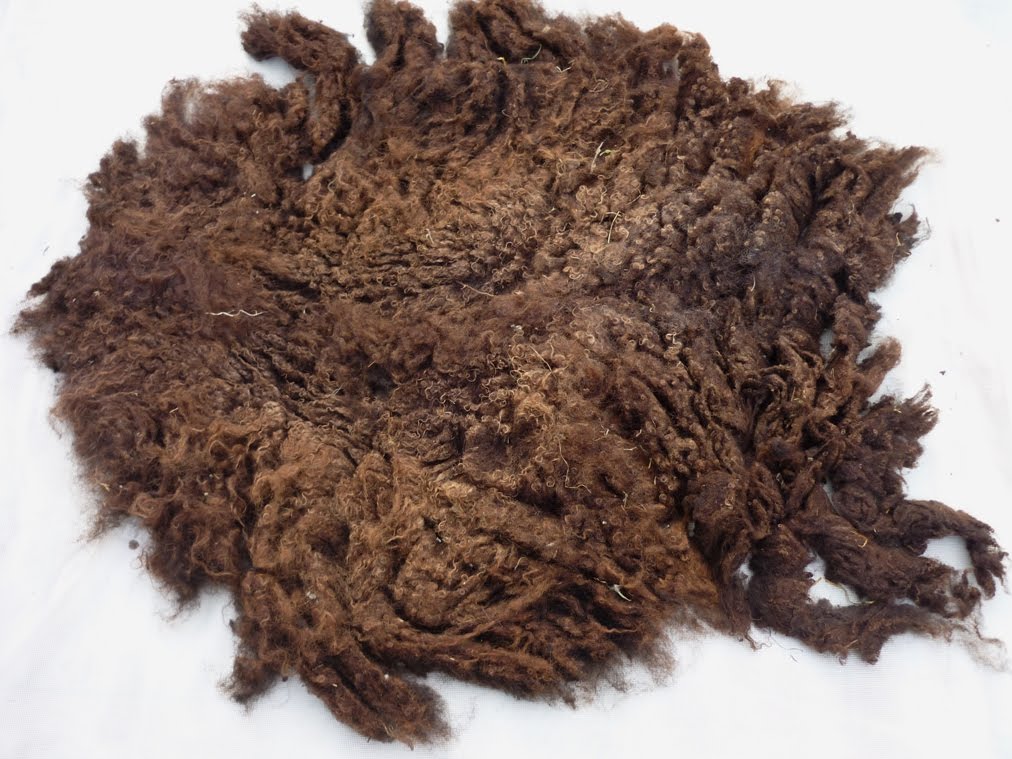
And finally … all the wool that is removed during skirting, which will end up on the compost pile!
Et voilà les “déchets” du tri qui finiront au tas de compost !
